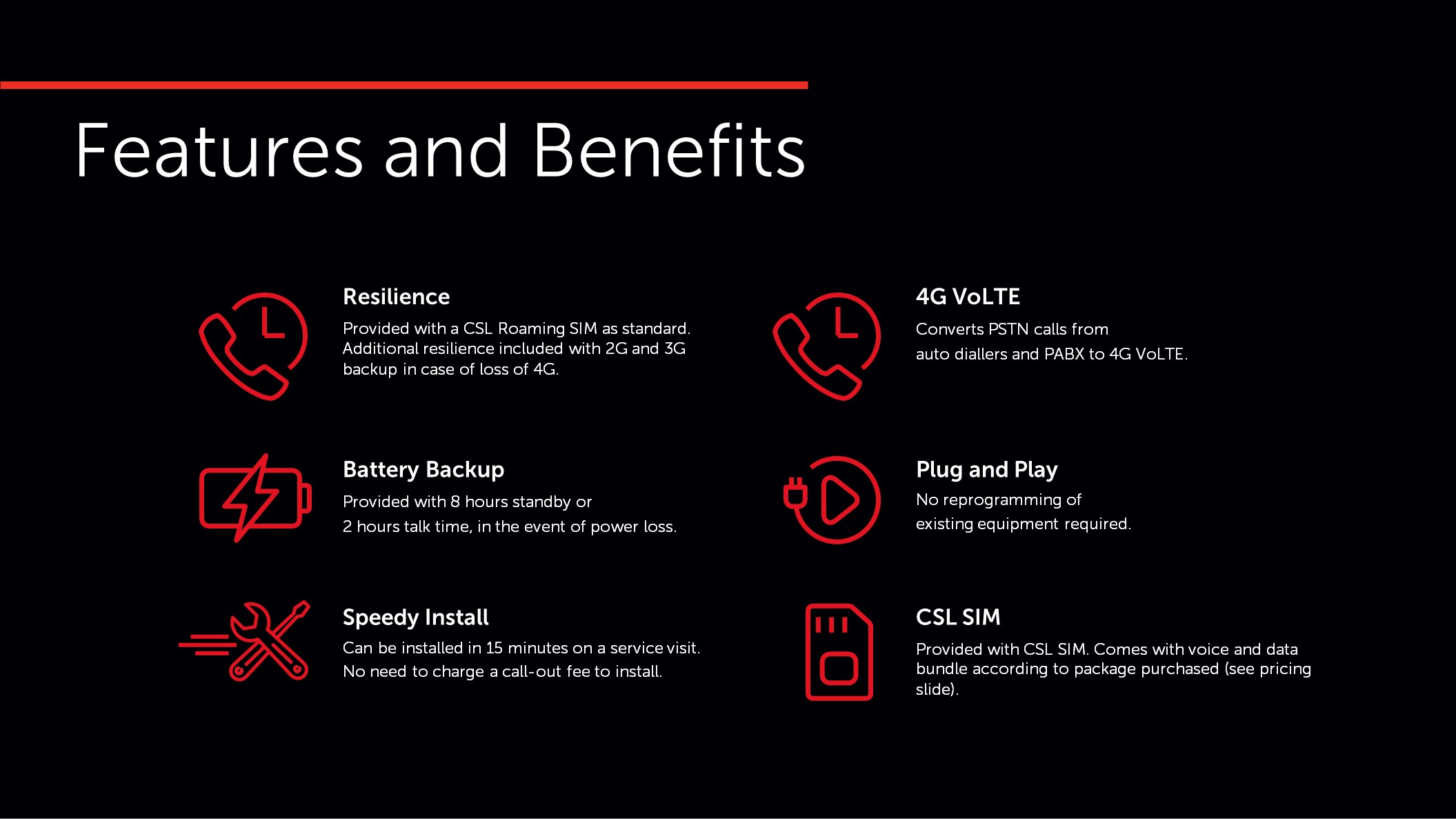Privacy Policy
Cookie Preferences
We use cookies and other tracking technologies to improve your browsing experience on our website, show you personalised content, and analyse our website traffic. Privacy Policy
We use cookies and other tracking technologies to improve your browsing experience on our website, show you personalised content, and analyse our website traffic. Privacy Policy



In the ever-evolving telecommunications landscape, the impending switch-off of the Public Switch Telephone Network (PSTN) approaches, presenting significant challenges for various sectors reliant on legacy communication infrastructure. Among these sectors, lift alarms and emergency call points emerge as critical components of safety systems, facing imminent obsolescence without timely upgrades. As businesses and organisations brace for the PSTN switch-off by 2025, it's imperative to navigate the specific challenges faced by these essential systems and identify innovative solutions to ensure operational continuity and abide by regulations.
The PSTN switch-off promises a seismic shift in the telecommunications landscape, imposing the transition from traditional analogue systems to modern, digital alternatives. Across sectors such as retail, local councils, hospitals, and transportation, the ripple effects of this transition will be felt the most.
Lift alarms, vital for summoning assistance during entrapments or medical emergencies, rely heavily on PSTN connections, making them vulnerable to service disruptions post-switch-off.
Similarly, emergency call points, that can be found everywhere in motorways, petrol station forecourts, and public spaces, face the prospect of communication breakdowns without compatible replacements for PSTN infrastructure.

Why you need to get ahead of the PSTN switch-off:
Ensures a smooth transition: Proactive planning allows for a thorough assessment of existing systems, exploration of different upgrade options, and informed decision-making. This avoids last-minute scrambling and potential delays that could disrupt critical operations.
Mitigates potential costs: Early planning enables businesses to budget effectively for the upgrade process. Waiting until the last minute can lead to rushed decisions and potentially higher costs due to limited options or vendor availability.
Minimizes downtime and disruptions: By taking action sooner, businesses can ensure a smooth transition to the new system with minimal downtime or disruption to their daily operations. This is particularly important for businesses that rely heavily on voice communication for critical functions.
Avoids the rush: As the switch-off deadline approaches, demand for qualified technicians and resources is likely to surge. Getting ahead of the curve allows businesses to secure the services of experienced professionals and avoid potential delays or complications due to limited availability.
By taking proactive steps now, businesses can ensure a smooth and cost-effective transition to the new telecommunications landscape. Remember, the PSTN switch-off is not a distant future event; it's happening now and taking action will safeguard businesses from potential disruptions and ensures continued connectivity in the years to come.
The imminent PSTN switch-off presents a significant challenge for numerous applications. If these systems are not upgraded to alternative communication technologies in time, businesses and organisations risk major disruptions and potential safety hazards. In the case of lift alarms, for example, failure to adapt before the PSTN switch-off could necessitate shutting down the entire system, jeopardising the safety of building occupants in the event of an emergency.
For some sectors operational closure is not a viable option. Nearly half of hospitals in England and Wales could be bracing for widespread disruption and device failures. According to a recent Freedom of Information (FOI) request conducted by Maintel, out of the 105 hospital trusts surveyed, 44% have yet to devise a strategy for the withdrawal.
The scale of the issue facing the UK healthcare sector becomes apparent with the FOI revealing that among the 56 NHS trusts able to respond, it’s estimated that there are up to 10,315 PSTN lines installed.

Approximately 70% of UK businesses are still using and relying on landlines, as indicated by a recent survey by National Business Communications. In retail environments, security alarms and private gates reliant on PSTN connections face operational disruptions without compatible alternatives. Likewise, in transportation networks, roadside emergency phones and national grid sites dependent on PSTN infrastructure require urgent upgrades to maintain communication resilience.
This impending change underscores the critical importance of taking proactive measures to ensure a smooth and timely transition for all affected applications. By addressing the challenges posed by the PSTN switch-off well in advance, businesses and organisations can safeguard the functionality of critical systems, prioritise the safety of their personnel and the public, and remain compliant with evolving regulations.
Amidst these challenges, CSL's VoiceLink emerges as a beacon of hope, offering a comprehensive solution to safeguard lift alarm systems and emergency call points against obsolescence. By seamlessly converting PSTN calls to 4G Voice over LTE (VoLTE), VoiceLink bridges the gap between legacy infrastructure and future-proof communication technologies, ensuring uninterrupted communication and enhanced reliability.
Key Features and Benefits of VoiceLink:

The PSTN switch-off presents significant challenges for lift alarm systems, but with CSL's VoiceLink solution, businesses and building owners can navigate this transition with confidence. VoiceLink offers a comprehensive solution that addresses the key concerns associated with the switch-off, ensuring continued functionality, regulatory compliance, and future-proof adaptability.
As we've highlighted throughout this article, proactive action is crucial to avoid potential disruptions and ensure a smooth transition. The demand for qualified technicians and resources is likely to increase dramatically as the switch-off deadline approaches. By getting ahead of the queue and implementing VoiceLink now, businesses can:
Secure the expertise of experienced lift maintenance professionals who can efficiently deploy the solution and minimise downtime during the upgrade process.
Avoid potential delays or complications due to limited availability of resources and potential cost increases associated with last-minute solutions.
Gain a competitive edge by demonstrating their commitment to safety and compliance, potentially enhancing tenant satisfaction and building trust in their commitment to maintaining a safe and secure environment.
Don't wait until the eleventh hour and risk potential disruptions to your lift alarm system's functionality. Prepare for the post-PSTN world with CSL's VoiceLink today and ensure the continued safety and well-being of your building occupants. Learn more about VoiceLink and its benefits for lift alarm systems: